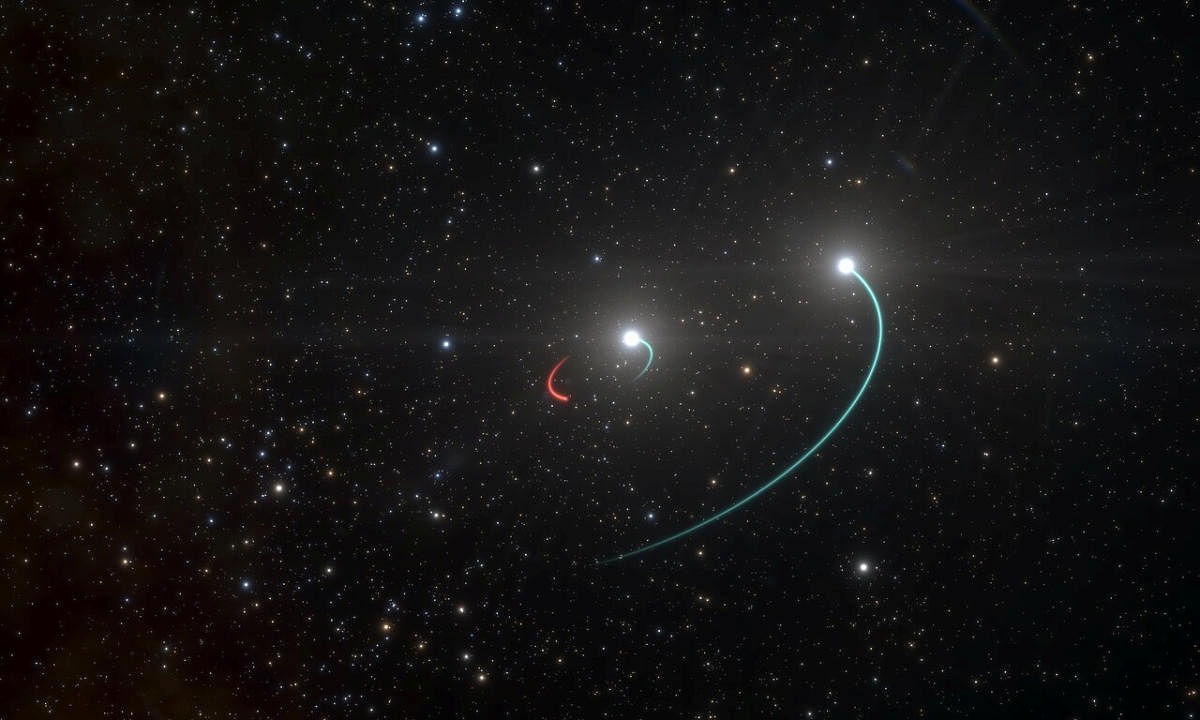
Right from the day the word 'black hole' was coined, people have been looking at the cosmic phenomenon as a mysterious monster, just waiting to swallow everything near it. Science fiction movies and books also created an atmosphere of fear. The relief, however, came when we took a closer look at the numbers, the mass, the distance - all running to nine or ten digits. Then there were estimates about how close a black hole should be for us to really worry about it. The answer: thirty light years!
And we now know there are no such "monsters" within this distance, near the earth. This also implies that there are no black holes at a “respectable” distance to be seen by a common person, or even astronomers and theoreticians.
However, now we have found a black hole that can be "seen" with naked eye. By its very definition, one cannot see a black hole. This particular one though, has two companions in orbits at quite a safe distance from it. It is these two companions that are visible to the naked eye.
HR 6819 is the number for this star in the bright star catalog (Harvard Revised star catalog) in the constellation of Telescopium. During its very first entry into the table, more than 150 years ago, it was given the tag of a double star. The parallax estimates have put its distance at 1000 light years. The two stars are bright enough to be visible to the naked eye even at that distance. The brighter of the two was classified as 'Be star', which implies a temperature of 10000 K and is therefore blue. It also has a shell whose contribution to the spectrum is substantial.
The ESO group included this star for a detailed study and found that the stars are orbiting a third, unseen component. It required a dedicated observational program with the 2.2 m telescope to monitor the variations of the third red star, which is fainter of the two. Several cycles of observations were needed to establish the 40-day period. A detailed analysis of the variation further revealed that the black hole is at a safe distance from the red star as well, so there is no chance of a catastrophe in the near future. The other blue star, orbiting the center of mass of the two inner masses is too far off to be disturbed by the black hole.
The estimated mass is about 4 times the mass of the sun, small even on stellar scales. It may be recalled that the mass of the black hole at the center of our Galaxy is a million times larger than this. Still, the fact that such binaries can be home to small black holes is a reason for excitement in itself. There may many more black holes and so the team is quite enthusiastic to continue with other stars.
The blue star of this triplet is seen with the naked eye. The name Telescopium, as can be guessed, is of recent origin. It was coined by the navigators who ventured into the southern oceans and is quite naturally a southern constellation, visible from South India. Located slightly south of the tail of Scorpion, it requires a chart to be identified. It is just about 20 degrees above the horizon during the early hours of the day and looks like any other blue dot. Due to its brightness, it might not be immediately distinguishable.
Though on astronomical scales, the adjective “small” is justified for the distance of this black hole, there is no reason for anxiety. A thousand light years is still an incredible distance, by human standards.